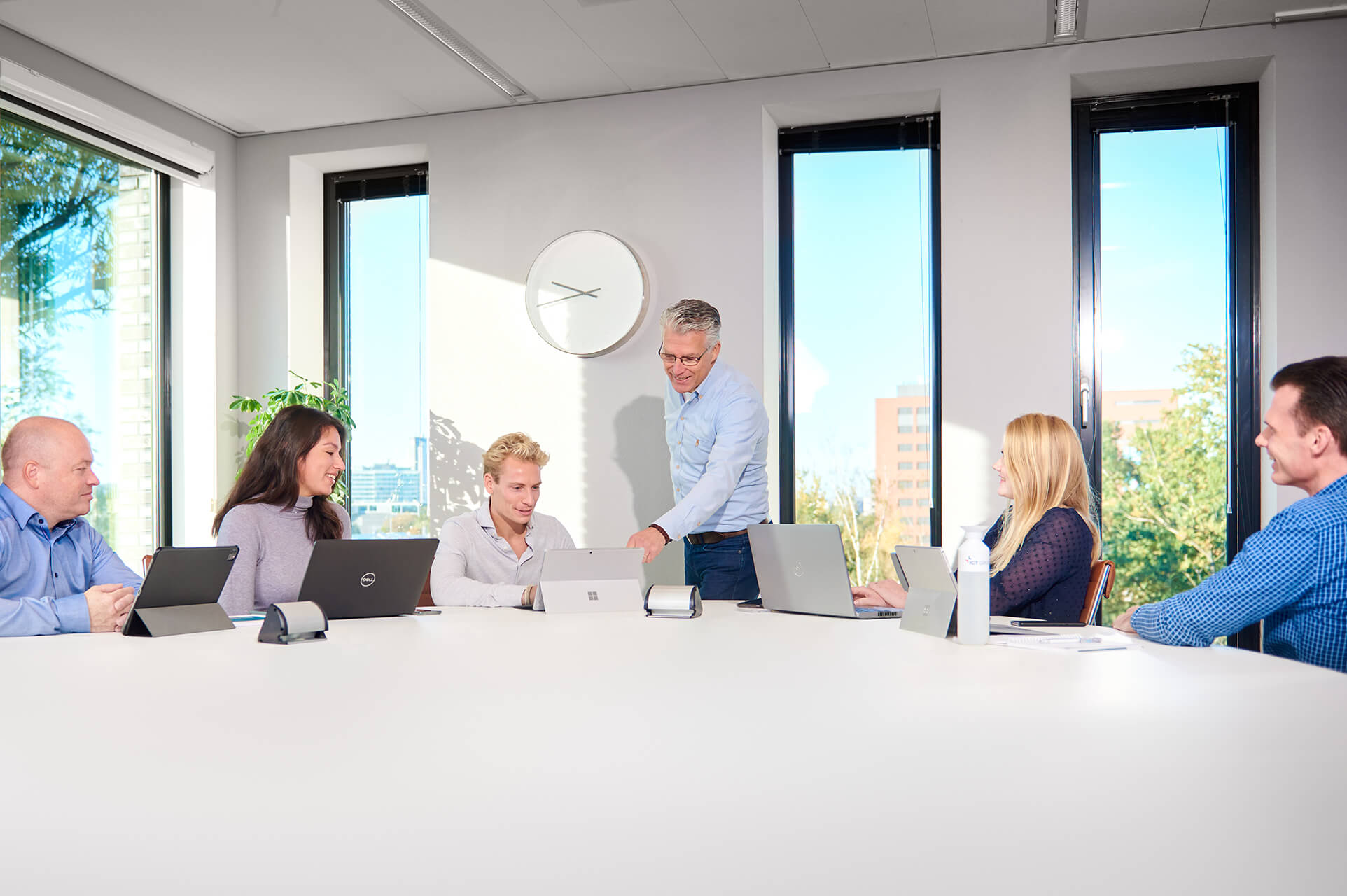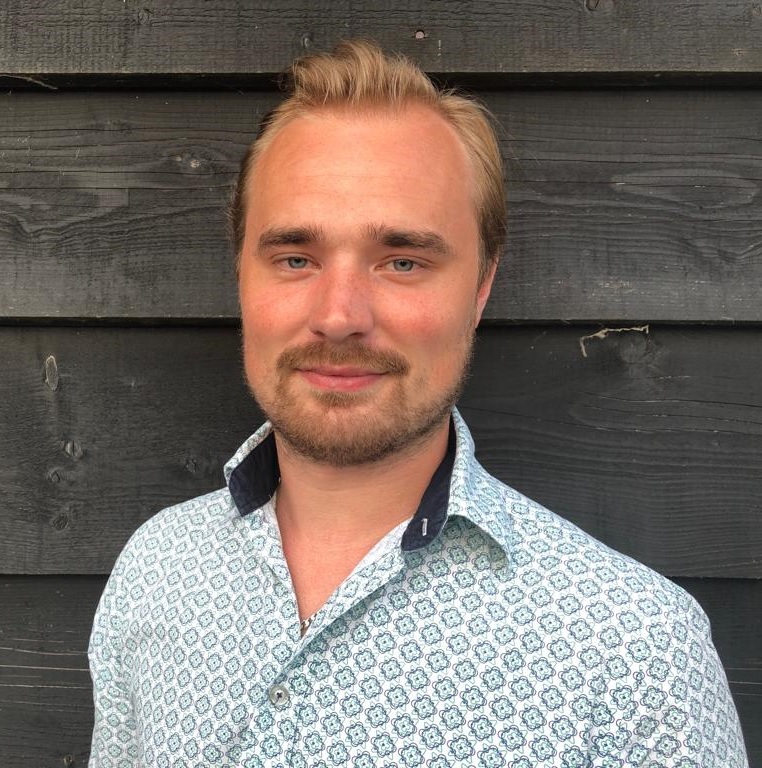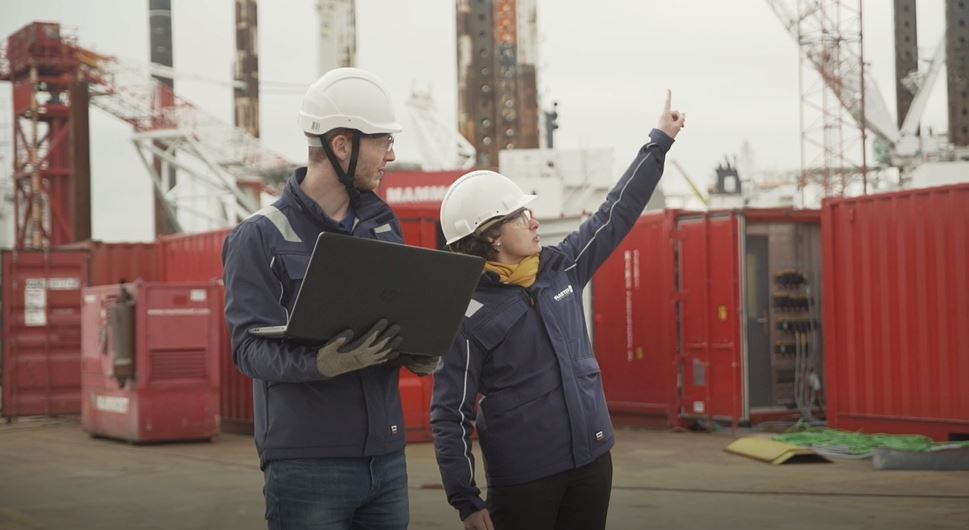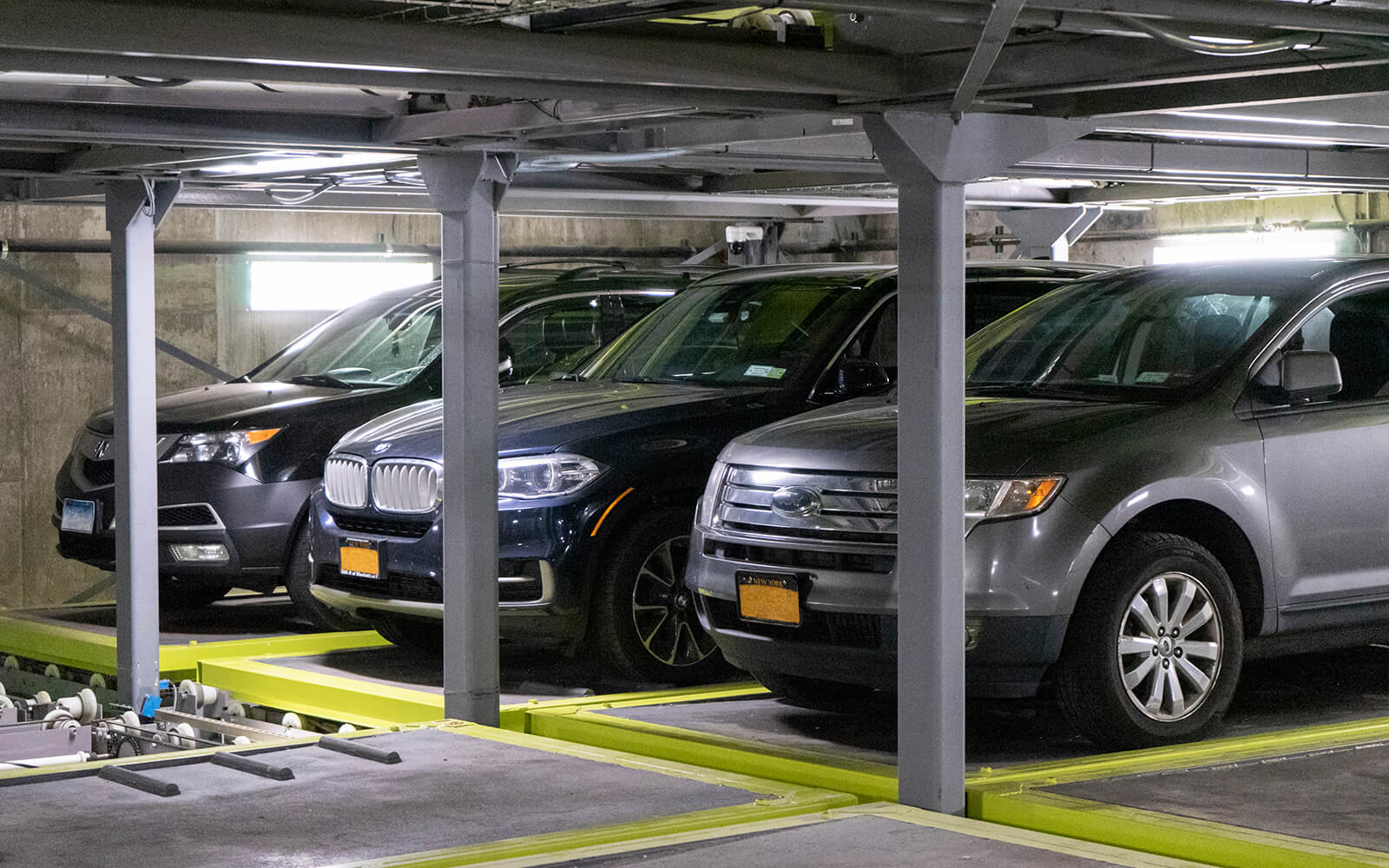
As a software developer, each new project entails interesting new challenges. “No parking garage is the same”, says Jeffrey Breugelmans, one of Raster’s Software Engineers.
Jeffrey is a member of the team that was involved in designing and implementing the software for an automated parking garage during a large part of 2019. The garage offers 42 parking spaces and is built by Lödige Industries in an apartment building in New York. Each garage is different in terms of its size, but also in terms of the number of parking layers and the number of entrances. In addition, there are often specific requirements to take into account, for instance the turning mechanism used to get the car in the right position.
Nose forward
“The mechanism used in this garage in New York differs from that used in other projects”, says Jeffrey. “In this project, there is a rotary table in the entrance cabin which ensures that when the user picks up his car, the car’s nose is pointed forward, enabling him to drive out straight away. In this case there’s an entire floor around the rotary table that can be lowered. The table turns over the top of it and can be lifted later on.”
Technology based on a sliding puzzle
Sliding puzzle parking systems, this is how Lödige describes the 5BY2 solution offered by the company. This technology for automated parking garages is based on the principle of the sliding puzzle. Users drive their car onto a pallet, a solid base plate, and then get out of their car. The way in which the pallets move can be compared to the movements in a sliding puzzle. As a result, the available parking space can be used very efficiently. Cars can be parked safely in close proximity, distributed over various parking layers.
For the garage in New York, Raster was responsible for the PLC as well as for the application software, the overarching layer. “The application software acts as a type of brain and determines where the car needs to be positioned as well as the smartest routes to and from the parking position.” It is essential that the applications software and PLC communicate properly in order to ensure that the automated parking garage functions correctly. “The application determines the route and the PLC controls the actual movements.”
It certainly wasn’t ‘business as usual’. You learn a tremendous amount from participating in a project like this.
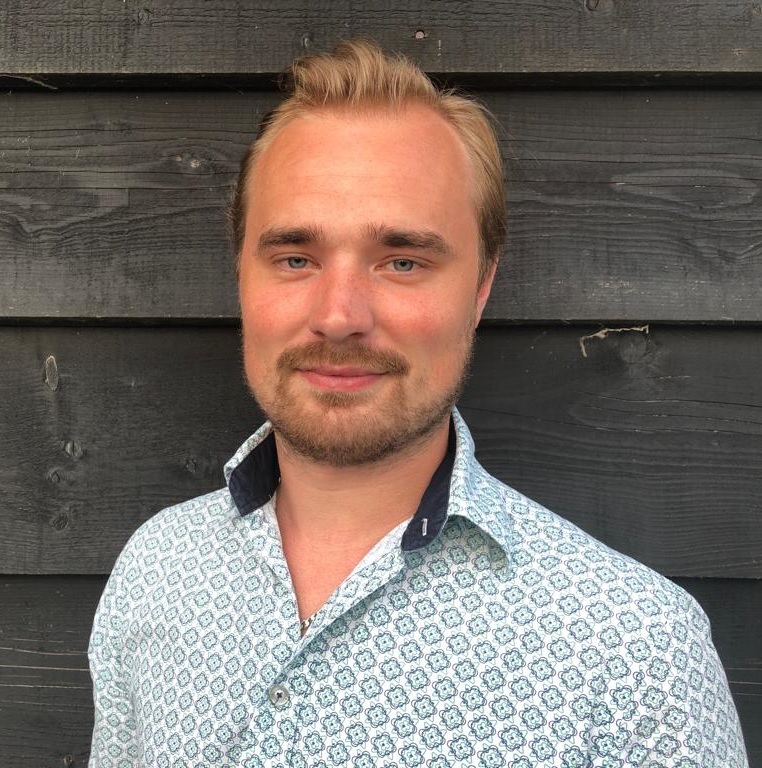
Exciting phase
Raster’s team also played a supporting role during the phases of commissioning, checking and testing to ascertain that the software and installations all worked properly. This starts with a series of tests to check whether all electrical connections have been installed correctly, whether the sensors function properly and whether all engines are running in the right direction. The next step consists of checking the movement, including a check of the pallets on which the cars are parked to see whether they can make the movements they need to make.
Jeffrey joined the project team during this last phase. By now he has spent approximately seven weeks in New York – spread over two separate periods – to finalise the software together with his colleagues. A third and final period of testing will take place. According to Jeffrey, commissioning is always an exciting phase, although it doesn’t require a set of steel nerves. “You never go there until you feel confident about what you have done.” The team will have done several tests prior to the commissioning phase, both by Raster in The Netherlands and by the project team to see whether the electrical connections are correct. The only thing that remains to be checked is whether all individual components can work together. Of course, there are always a couple of finishing touches.
A special aspect of this project is the fact that Lödige Industries has asked Raster to develop generic software: a baseline that enables the supplier to carry out all or most of the work themselves during follow-up projects, ensuring that they are not completely dependent on a specific software developer.
International cooperation
One of Jeffrey’s biggest challenges was the cooperation with the project team in New York. The team’s composition was very diverse, both in terms of nationality and competences. The challenge in the composition of the team is that you are involved in a multidisciplinary and varied way. One moment you are helping with wiring and testing software and the other moment you are thinking about the construction operation with the mechanical team members. In addition to the Dutch employees from Raster there were German and Dutch colleagues from Lödige Industries, as well as local technicians for the installation “For instance, the electricians were used to a different way of wiring than the ways in which we are used to doing it in Europe. And that presents quite a challenge when it comes to making sure that things proceed smoothly and instructing people how to do something and then checking whether everything is correct.”
On the other hand, the process of fine-tuning the software proceeded extremely smoothly thanks to the extensive amount of experience Raster has accumulated in 5BY2 automated parking garage projects. Jeffrey joyfully looks back on the project, especially due to its international nature. “For me it was a fantastic experience to work together with others in a different manner. In part that is because of the technology, but it was primarily due to the people. The way of working in New York is very different from here. And that makes you think about the various ways in which you can combine different approaches. It certainly wasn’t ‘business as usual’. You learn a tremendous amount from participating in a project like this.”
